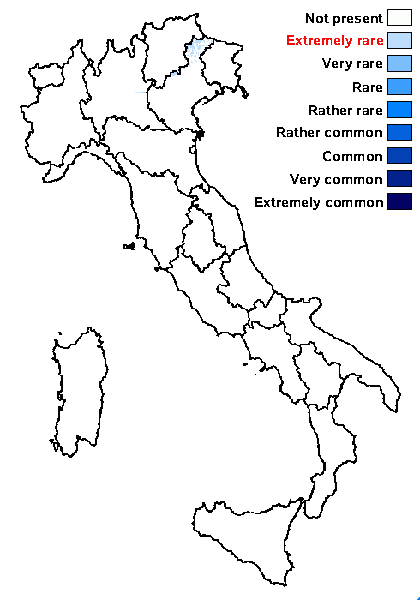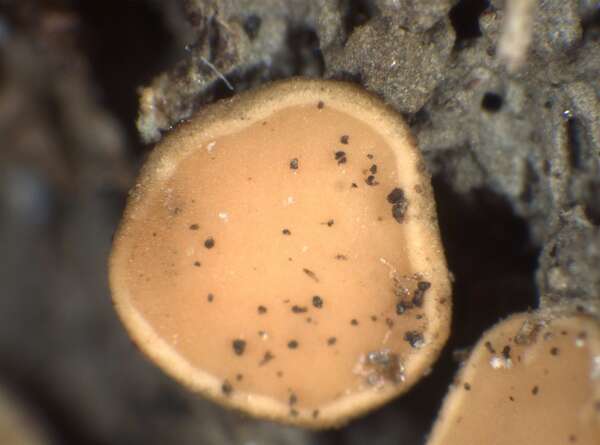Gyalecta friesii Körb.
Syst. Lich. Germ.: 173, 1855.
Synonyms: Gyalecta denudata Th. Fr.; Petractis friesii (Körb.) A. Massal.; Secoliga friesii (Körb.) A. Massal.
Distribution: N - Ven.
Description: Thallus crustose, whitish, pale grey-green or olive-grey, thin, more or less continuous, often granular-powdery. Apothecia without a thalline margin, sessile, strongly constricted at base, 1-5 mm across, with a concave to flat, orange-yellowish disc, and a thick, smooth, somewhat paler proper margin. Proper exciple of radiating hyphae, brownish yellow in outer part, colourless, within; epithecium colourless to yellowish; hymenium colourless, 80-105 μm high, the hymenial gel I+ blue; paraphyses simple to sparingly branched, 1.5-2 μm thick in lower part, the apical cells to 3 μm wide. Asci 8-spored, cylindrical to elongate-subclavate, thin-walled, without tholus, the wall and the contents I+ blue. Ascospores 3-septate, hyaline, narrowly ellipsoid to fusiform, 14-20(-22) x (2.5-)3-4.5 μm. Photobiont trentepohlioid. Spot tests: K-, C-, KC-, P-, UV-. Chemistry: without lichen substances.Note: a circumboreal-montane species growing on bryophytes and plant debris, more rarely on bark of conifers and on siliceous rocks, with optimum near or above treeline.
Growth form: Crustose
Substrata: soil, terricolous mosses, and plant debris
Photobiont: Trentepohlia
Reproductive strategy: mainly sexual
Commonnes-rarity: (info)
Alpine belt: extremely rare
Subalpine belt: extremely rare
Oromediterranean belt: absent
Montane belt: absent
Submediterranean belt: absent
Padanian area: absent
Humid submediterranean belt: absent
Humid mediterranean belt: absent
Dry mediterranean belt: absent

Predictive model
Growth form: Crustose
Substrata: soil, terricolous mosses, and plant debris
Photobiont: Trentepohlia
Reproductive strategy: mainly sexual
Commonnes-rarity: (info)
Alpine belt: extremely rare
Subalpine belt: extremely rare
Oromediterranean belt: absent
Montane belt: absent
Submediterranean belt: absent
Padanian area: absent
Humid submediterranean belt: absent
Humid mediterranean belt: absent
Dry mediterranean belt: absent

Predictive model
 Index Fungorum
Index Fungorum
 GBIF
GBIF




